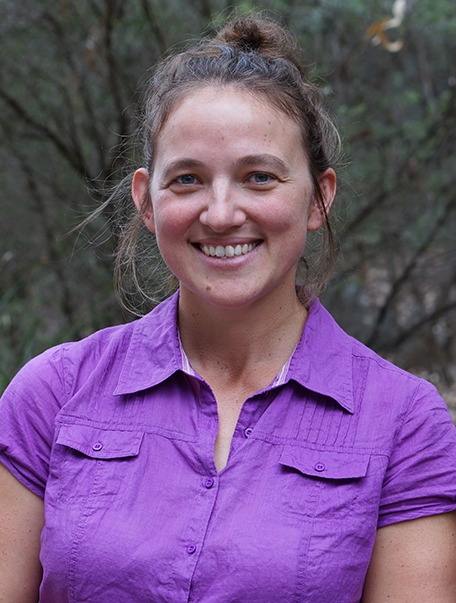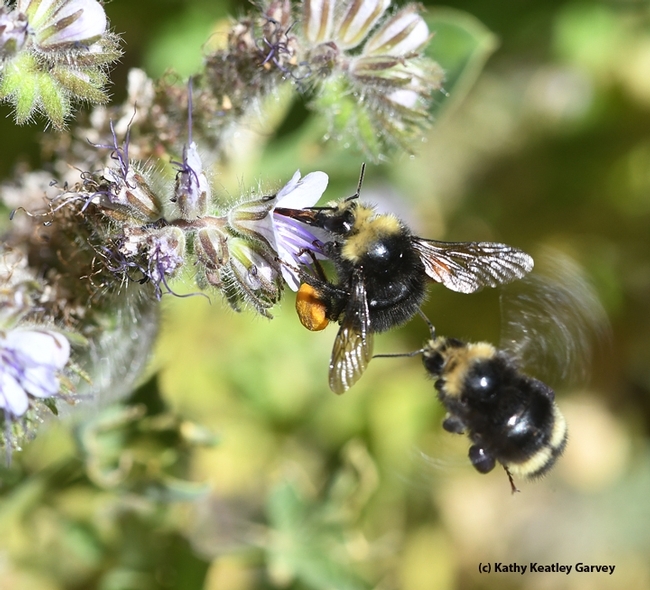- Author: Kathy Keatley Garvey

The seminar, hosted by Professor Neal Williams begins at 4:10. Click here to register to attend.
Rader, an associate professor, says she is broadly interested in pollination ecology, landscape ecology and plant–animal interactions in natural and human-modified landscapes. She is currently working on projects that investigate the ways in which plant and animal biodiversity respond to global change and the performance of wild and managed insect pollinators in horticultural crops.
She writes on her website: "I am a community ecologist and my research focuses on plant–animal interactions in natural and human-modified landscapes. I am interested generally in the ecology of plants and animals in different types of habitats and landscapes and how they respond to differing management practices and global change. My current projects relate to wild and managed insect pollinators, their efficiency at pollinating horticultural crops and finding ways to improve fruit yield and quality by understanding their life history needs."
Rader holds a bachelor of environmental science (1998) from the University of New South Wales, Sydney, Australia. She obtained both her master's degree (2005) and doctorate (2011) from James Cook University, Cairns, Australia. Her master's thesis: "Vertical Distribution, Resource and Space Use in a Tropical Rainforest Small Mammal Community." For her doctorate: "The Provision of Pollination Ecosystem Services to Agro-Ecosystems by a Diverse Assemblage of Wild, Unmanaged Insect Taxa." She won a 2017- 2020 Australian Research Council Discovery Early Career Researcher Award.
Among her most recent journal publications:
- S.A.E.C. Wijesinghe, L.J. Evans, L. Kirkland & R. Rader 2020, ‘A global review of watermelon pollination biology and ecology: The increasing importance of seedless cultivars,' Scientia Horticulturae, vol. 271, pp. 109493,
https://doi.org/10.1016/j.scienta.2020.109493 - Heidi Kolkert, Rhiannon Smith, Romina Rader & Nick Reid 2020, ‘Insectivorous bats foraging in cotton crop interiors is driven by moon illumination and insect abundance, but diversity benefits from woody vegetation cover,' Agriculture, Ecosystems & Environment, vol. 302, pp. 107068,
https://www.sciencedirect.com/science/article/abs/pii/S0167880920302541 - Jamie R. Stavert, Charlie Bailey, Lindsey Kirkland & Romina Rader 2020, ‘Pollen tube growth from multiple pollinator visits more accurately quantifies pollinator performance and plant reproduction,' Scientific Reports, vol. 10, no. 1,
https://www.nature.com/articles/s41598-020-73637-5 - Liam K. Kendall, Vesna Gagic, Lisa J. Evans, Brian T. Cutting & Jessica Scalzo, Romina Rader. 2020, ‘Self-compatible blueberry cultivars require fewer floral visits to maximize fruit production than a partially self-incompatible cultivar,' Journal of Applied Ecology,
https://besjournals.onlinelibrary.wiley.com/doi/abs/10.1111/1365-2664.13751 - Vesna Gagic, Lindsey Kirkland, Liam K. Kendall, Jeremy Jones & Jeffrey Kirkland Romina Rader 2020, ‘Understanding pollinator foraging behaviour and transition rates between flowers is important to maximize seed set in hybrid crops,' Apidologie,
https://link.springer.com/article/10.1007/s13592-020-00800-2
Agricultural Extension specialist Ian Grettenberger coordinates the seminars. This is the last of the winter seminars. For technical issues, contact Grettenberger at imgrettenberger@ucdavis.edu.



